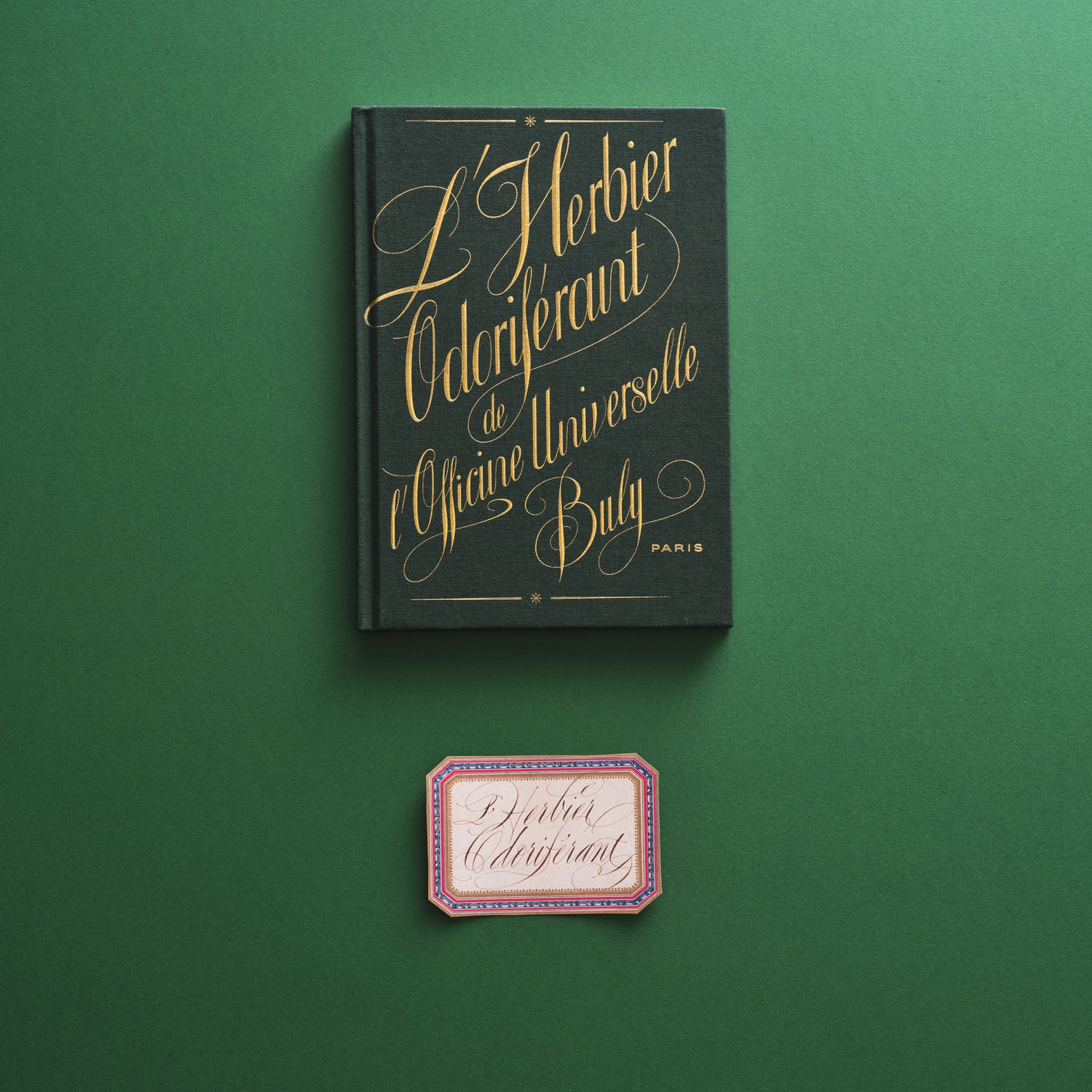
The herbarium is more than just a book containing treasures of dried flowers and plants. It is the delicate gesture of a botanist, the nostalgic gesture of a traveller, the wise gesture of a collector and the contemplative gesture of a lover.
The Officine Universelle Buly conceived an herbarium like no other: a Scented Herbarium, a small, old-fashioned, gold-lettered bound book that hides a secret at its heart. Thanks to a very special technique used on the paper, all the ingredients in its collection Les Jardins Français come to life at will by scratching the illustrations of each plant, vegetable or fruit. They are twelve – Basil, Redcurrant, Sweet Potato, Verbena, Watercress, Parsley, Cucumber, Mint, Tomato, Carrot, Beetroot and Rhubarb – to match the six Eaux Triples of “Les Jardins Français of the Officine Universelle Buly”.The herbarium is more than just a book containing treasures of dried flowers and plants. It is the delicate gesture of a botanist, the nostalgic gesture of a traveller, the wise gesture of a collector and the contemplative gesture of a lover.
The Officine Universelle Buly conceived an herbarium like no other: a Scented Herbarium,
Iraqi Beetroot and Egyptian Rhubarb; Indian Cucumber and Syrian Mint; Oriental Watercress and Sardinian Parsley; Scandinavian Redcurrant and Peruvian Tomato; Caribbean Sweet Potato and Afghan Carrot, and lastlyAndean Verbena and Ulu Basil. This herbarium is a tribute to the very conception of this collection, inspired by the discovery, in an antiques shop, of a treasure trove belonging to an 18th century botanist consisting of hundreds of old seeds and seedlings. From seeds to dried flowers preserved over the centuries, herbarium botany preserves and collects a plant heritage that has sometimes disappeared. It also helps to resurrect rare perfumes or, as the Officine did, to imagine sentimental scents based on memories.

MICHEL DE MONTAIGNE
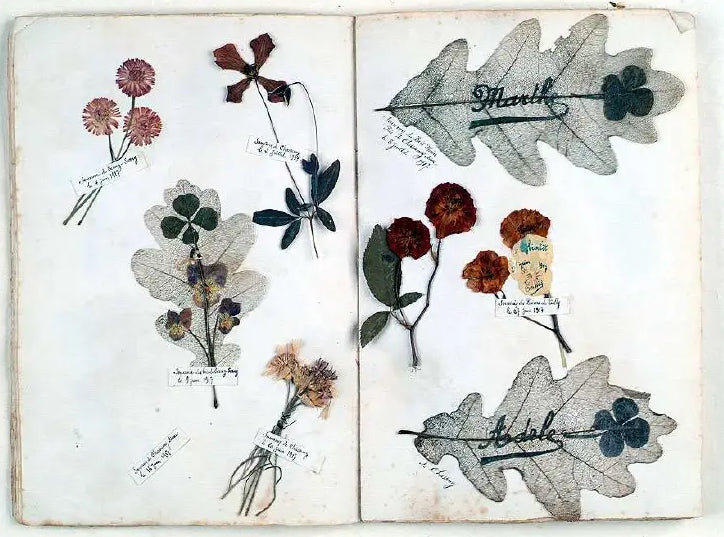
Herbariums – collections of plants dried between sheets of paper – first appeared several centuries ago, thanks to doctors and apothecaries who sought to identify and list their uses and properties. The first preserved herbaria were discovered in Italy, works of the doctor and botanist Luca Ghani (1490-1556), who perfected not only the herbarium technique but also that of the “Hortus simplicium” or “Orto botanico”: the botanical garden. In the herbarium the provenance of the plant, the date it was harvested, its habitat, colour, name, family etc. are recorded. These collections of plants therefore display the History of Botany, preserving its traces, but also their precious DNA.
Flowers and leaves dried by soldier Stanislas Boireau in June and July 1917 in the Aisne region, near the Chemin des Dames
The largest existing herbarium (8 million plants over 350 years of research) is kept at the Muséum National d’Histoire Naturelle in Paris, followed by those of the New York Botanical Garden, the Komarov Botanical Institute in St Petersburg, the Royal Botanic Gardens in Kew in the United Kingdom, and the Missouri Botanical Garden in the United States.
These places, and many others, conceal a memory of the world in their drawers. Much more than just botany, it is also the memory of travellers, scientists, plant enthusiasts and even soldiers. For example, during the four years of the First World War, the soldier Stanislas Boireau kept a notebook and sent dried flowers collected near the most terrible battlefields to Marthe, his fiancée, who made detailed dated herbariums of them. Other soldiers carved dried leaves and flowers into the pages of a book bearing the image or name of their beloved... Herbaria are indeed traces of life, of love of nature, but they are also an art form treasured by great minds and artists such as the philosopher Jean-Jacques Rousseau and the poet Emily Dickinson...
Sylvia Plath, Winter Trees (1962)
An Enlightenment philosopher and writer, Jean-Jacques Rousseau (1712-1778) enjoyed immense successes – his novel “Julie ou la nouvelle Héloïse” (Julie, or the New Heloise) (1761), “Du contrat social” (The Social Contract) (1762) – which earned him fame but also long exiles. He, who often advocated a return to Nature, found consolation in its bosom during his escapes, and began to develop a passion for botany and herbalism in the 1760s. He corresponded with scientists and sought the company of naturalists. Following the model set by the Swede Car Von Linné in his major work Systema naturæ, he created dozens of herbariums in all the countries he visited. Between 1771 and 1774, Rousseau wrote “Les Lettres sur la botanique” (Letters on the Elements of Botany) to Mme Delessert, a botany course for his daughter Madelon. In his last unfinished work, “Les Rêveries du promeneur solitaire” (Reveries of the Solitary Walker, written in 1776-78), he reveals his private life, especially his passionate relationship with Nature, which he constantly surveys, explores and contemplates, and whose tiny masterpieces he collects between two sheets of paper.
Jean-Jacques Rousseau, Letter, 1 August 1765
“What I can do – I will – Though it be little as a Daffodil”. This verse by Emily Dickinson (1830-1886) tells a lot about her poems, 1789 little masterpieces of delicacy and conciseness. It reflects her vision of the world, a secret, non-conformist world that fits in the palm of her hand but radiates with a thousand lights, an entire life carefully guarded between two pages. Dickinson started studying botany at the age of nine and methodically began her gardens and herbarium in her late teens, an herbarium of over 400 species arranged on more than sixty pages with a subtle art, punctuated like one of her poems, with her elegant handwriting and an almost sensual loving care for these phantoms of beauty preserved on paper. Did she, who lived all her life in a small town in New England, dream of faraway lands as she contemplated the fascinating scent of Jasminum, a tropical jasmine, on the front page of her herbarium? Too fragile, this herbarium was kept out of sight for a long time, but it was finally digitised by the Houghton Rare Book Library of Harvard thus enabling the whole world to finally discover its beauty.
Emily Dickinson
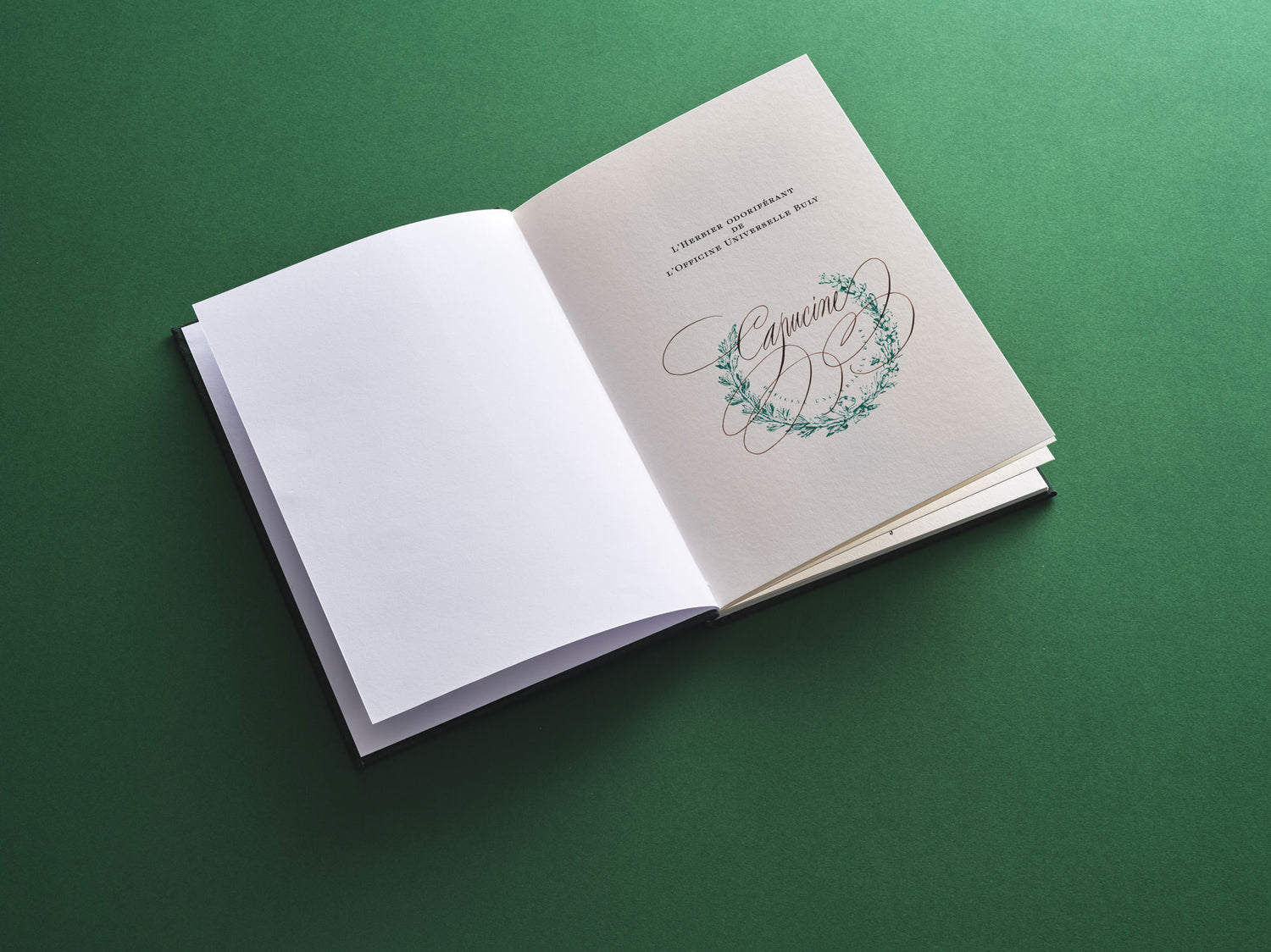
In order to assert its ownership of name (and not of land!), and to remember those childhood notebooks on which the student's surname was inscribed, the Officine has created a stamped book-plate to elegantly calligraphy the first name and surname duo on its first page.
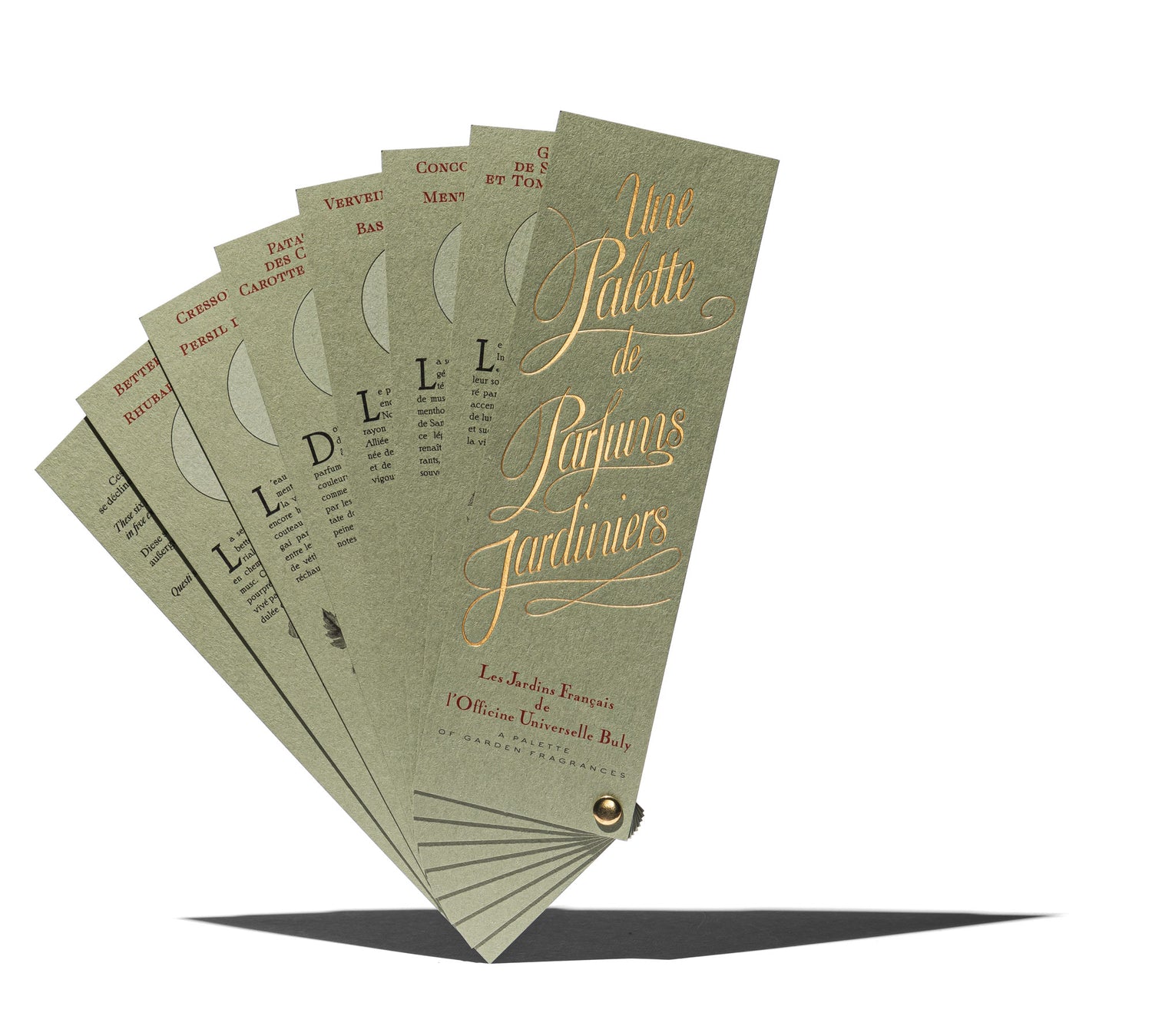
To enable the discovery of the six scents of this collection, the Officine Universelle Buly has created its olfactory colour chart: the notes are released once you scratch the paper with your fingertips. Available in all our Officines across the world.
Sign up to receive future dispatch of the Officine.

We will send you an email to reset your password
Your cart is currently empty
Upon request, your purchases are wrapped in a printed paper reproducing an old newspaper or slipped into an elegant, green-marbled gift pochette, as an homage to the creation and history of the Officine Universelle Buly.
The Exceptional origata gift wrapWHETHER FLORAL, STRIPED OR CHECKERED, AND ALWAYS HIGHLY CHROMATIC, THESE JAPANESE PAPERS ARE INSPIRED BY THE MOTIFS RESERVED FOR KIMONOS AND ARE FOLDED ACCORDING TO THE HIGHLY CODIFIED ART OF ORIGATA.
Monogram gift wrapThe initials of the fortunate recipient are embossed on the elegantly textured gift paper. Gilded in the old-fashioned style, the initials are then highlighted with a velvet ribbon.

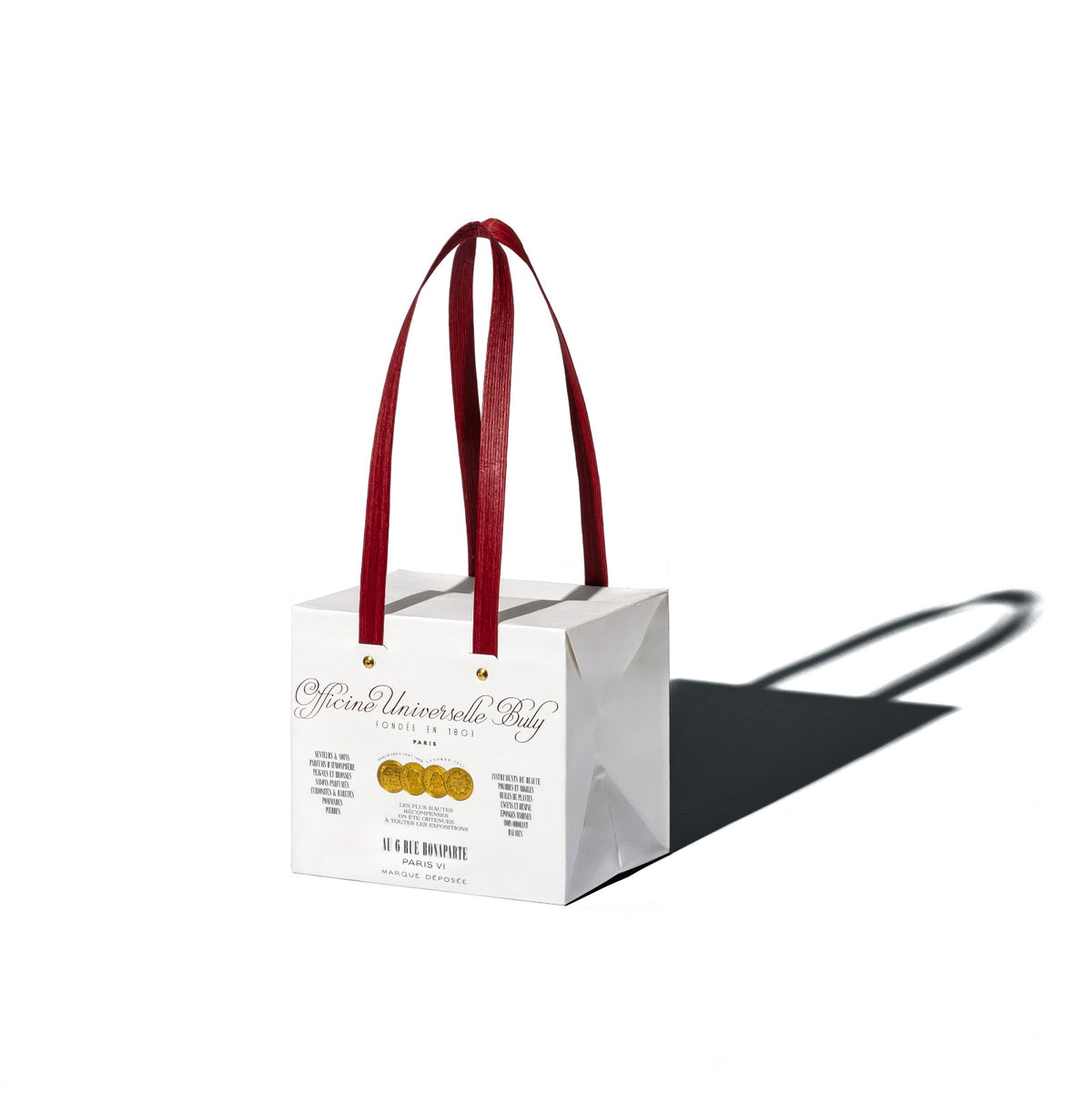
Choose the size of your bag
XS: Miniature case for small comb, soap or baume des muses ∙ 2,00 €
S: Travel companion for perfumed vials ∙ 2,00 €
M: Distinguished bag for scented candles and large books ∙ 2,00 €
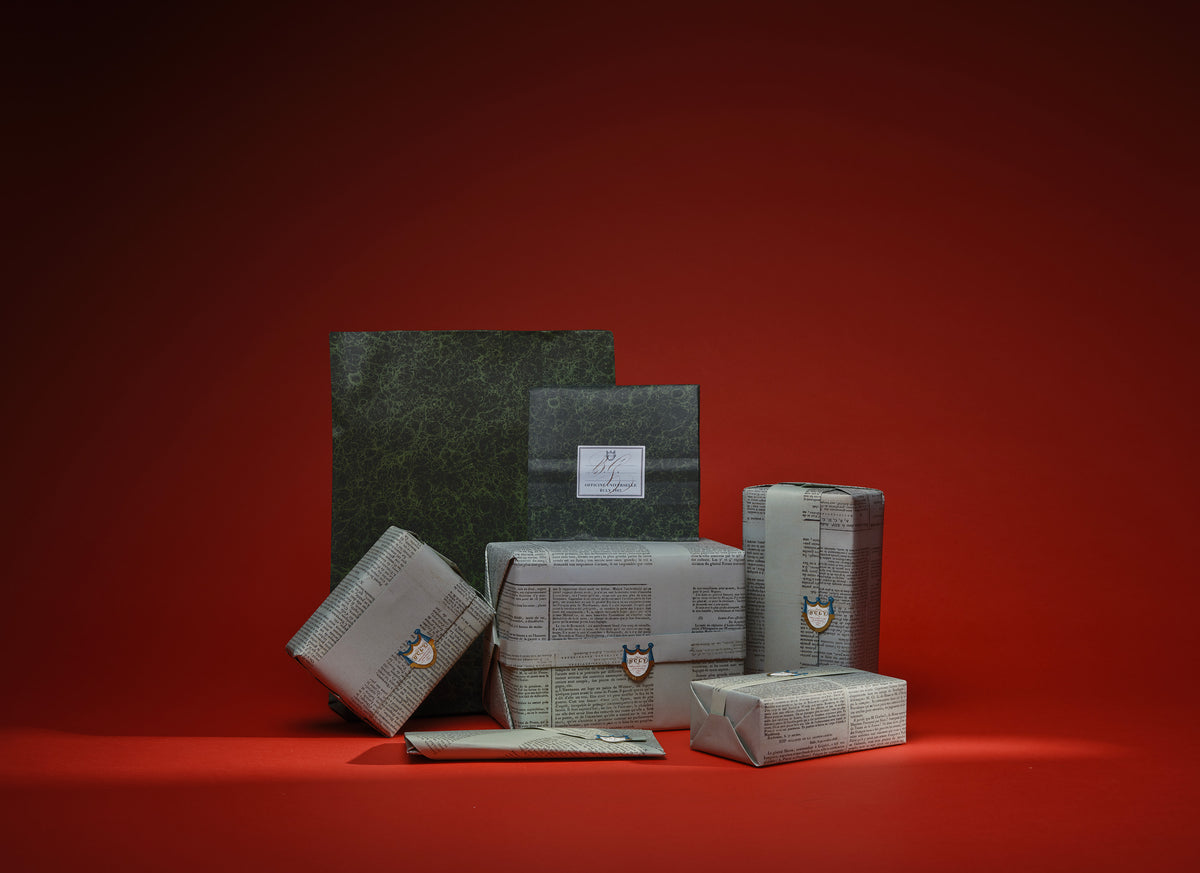
Select the products to be gift wrapped
These products are already gift-wrapped
None of the product in the cart are compatible with this service
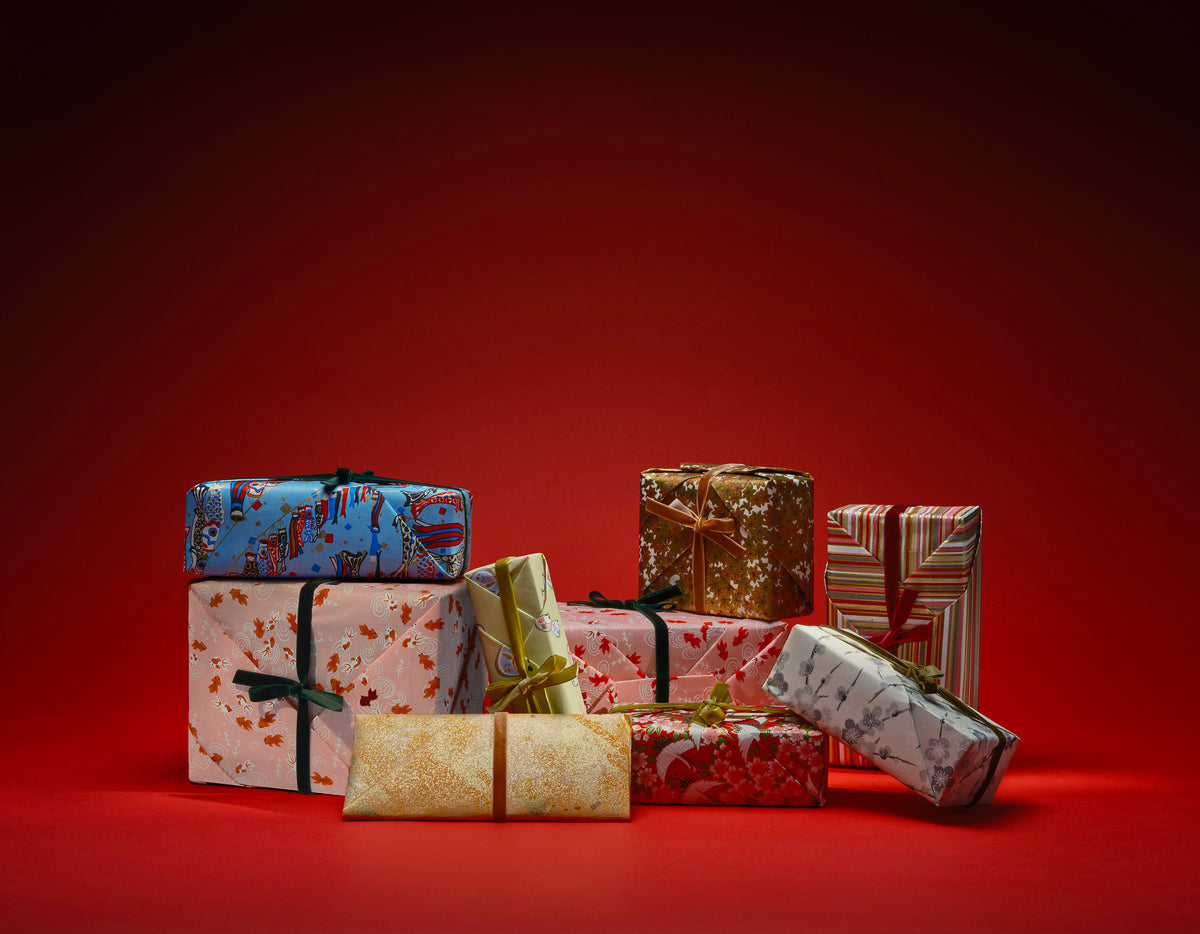
Select the products to be gift wrapped
These products are already gift-wrapped
None of the product in the cart are compatible with this service

Select the products to be gift wrapped
These products are already gift-wrapped
None of the product in the cart are compatible with this service
Every request will be respected as far as possible and the possibilities are great at Officine Universelle Buly.
Quantity :

Have your initials or those of the lucky recipient engraved in the heart of your Savon Superfin.
Have your accessory engraved with your initials, your name, or those of the person you’re gifting it to.
Have your initials or those of the lucky recipient of this gift engraved on the kit, the balm, the comb and on the toothbrush
Our bottles, candles and incenses are carefully packaged with handwritten calligraphy labels.
Our master calligrapher, armed with a quill and ancient ink pads, will create a wonderful bookplate on the title page.
We mail your calligraphic message directly to your recipient.
Please enter valid characters only
However, it seems that you are in Japan, would you like to switch to our Japanese website based in Tokyo?
Visit our StoreWe think you're in .
Update your delivery location?